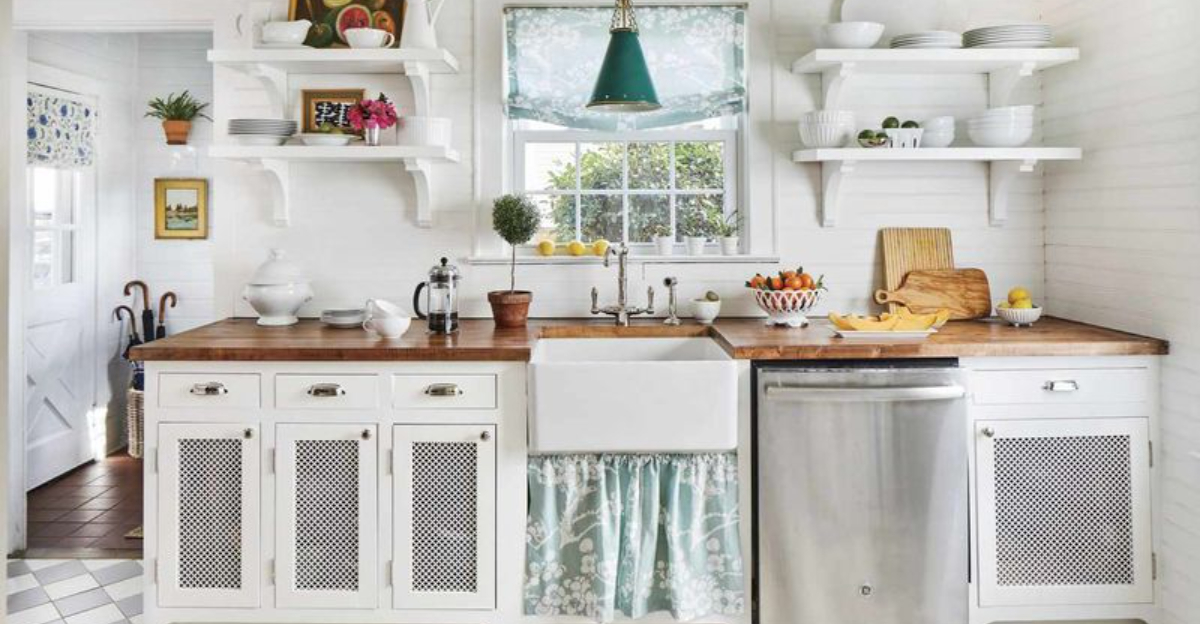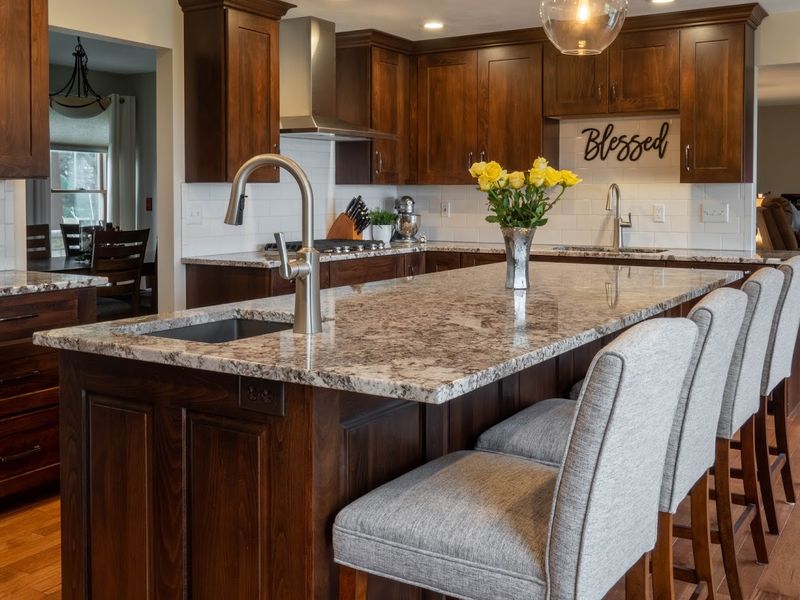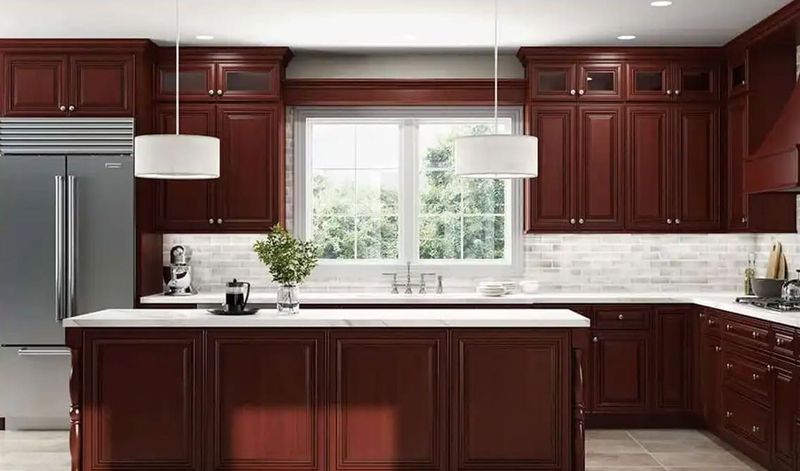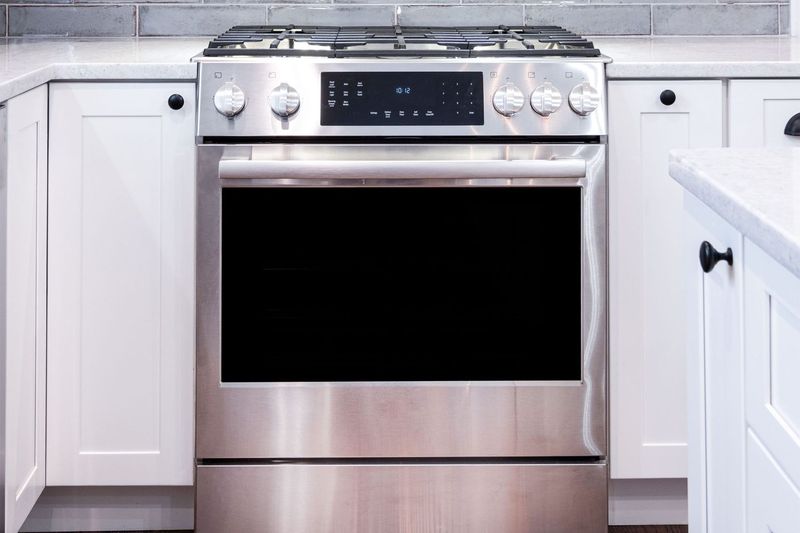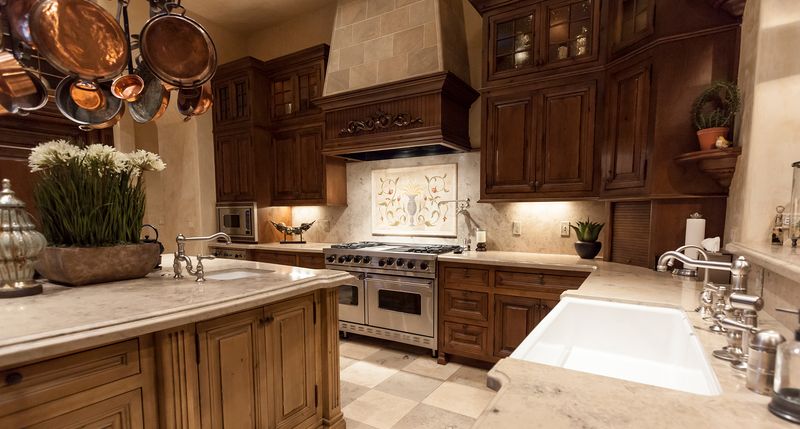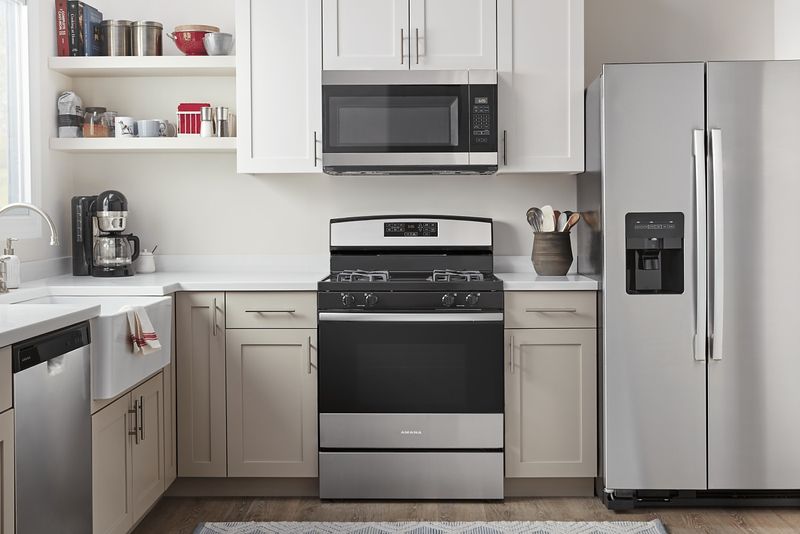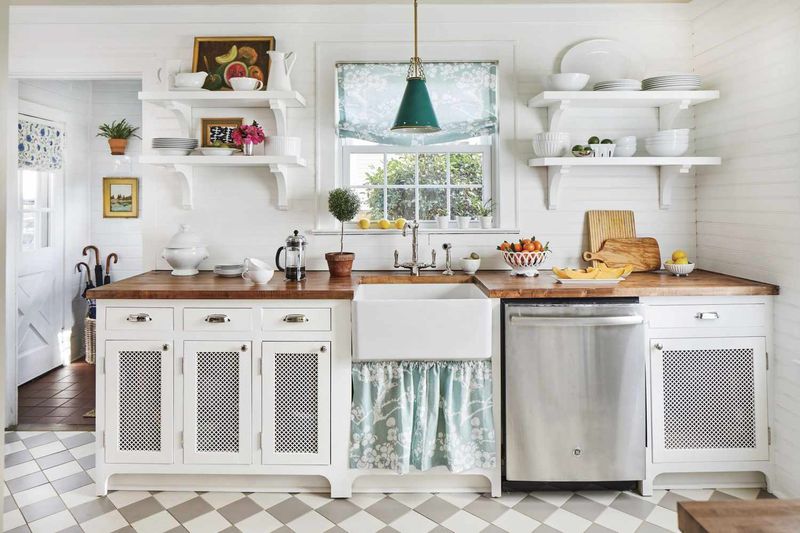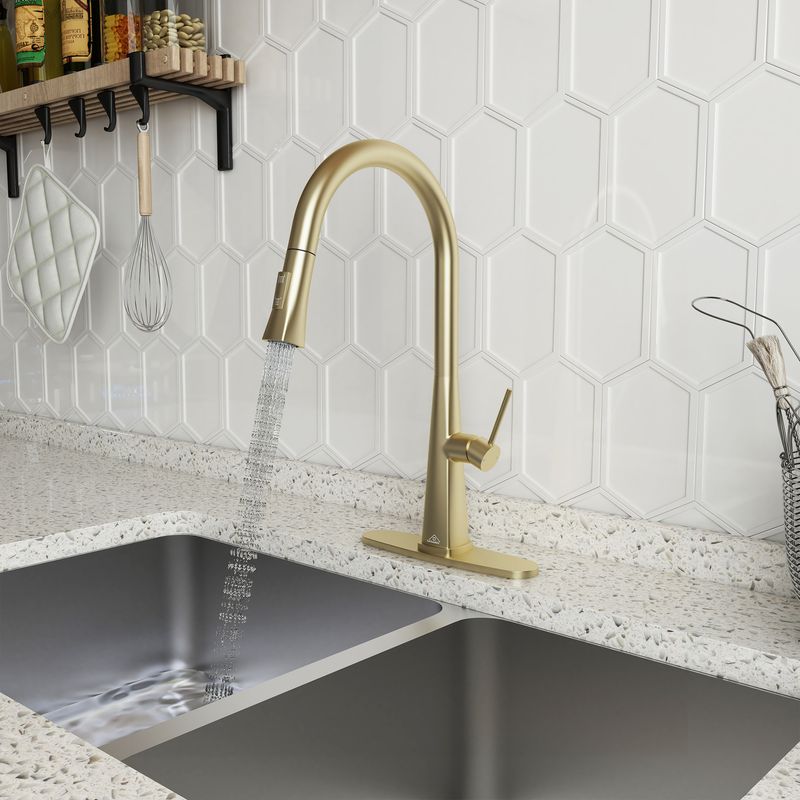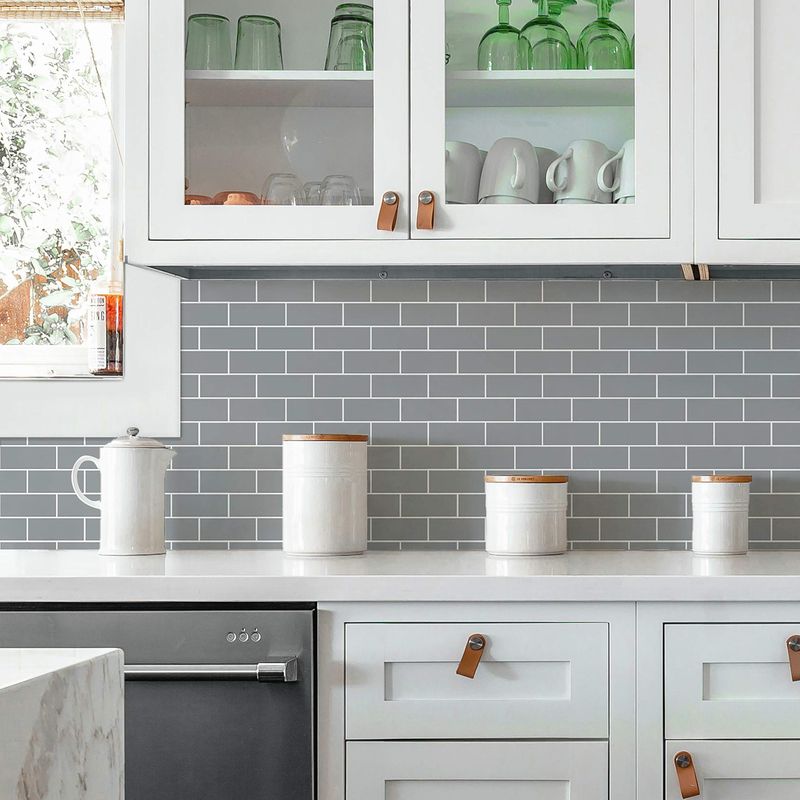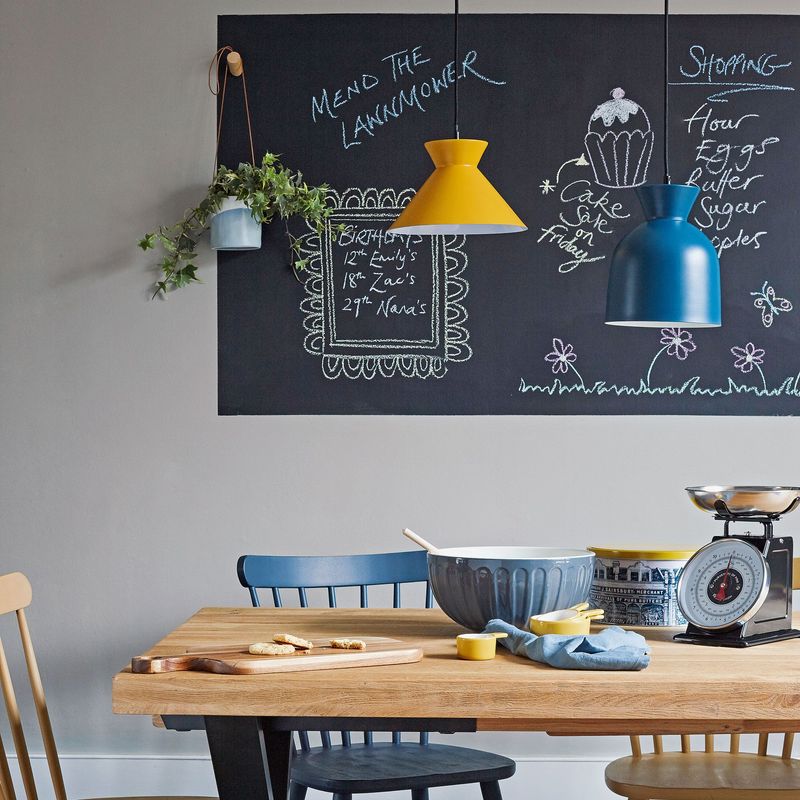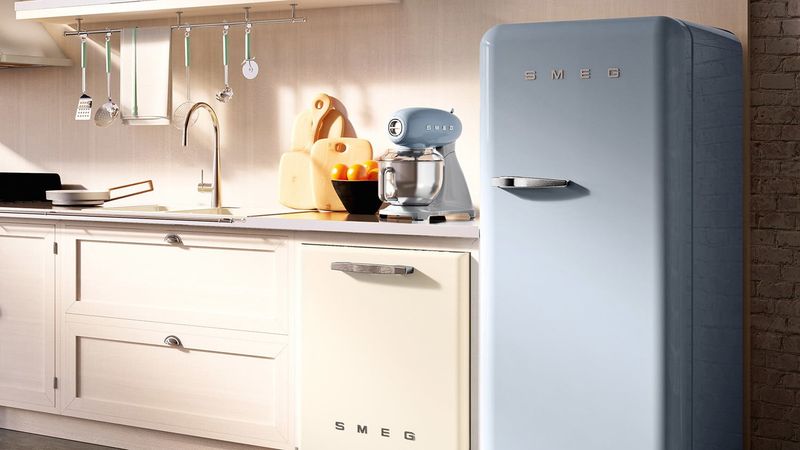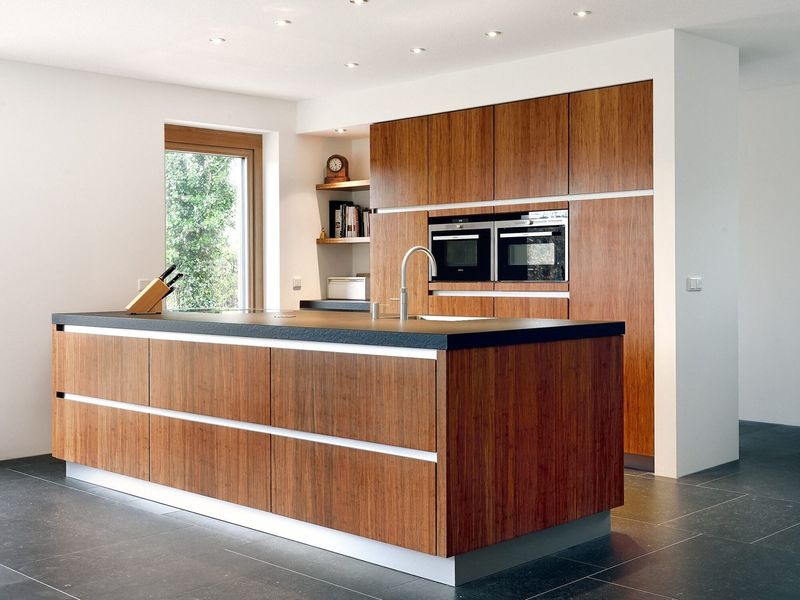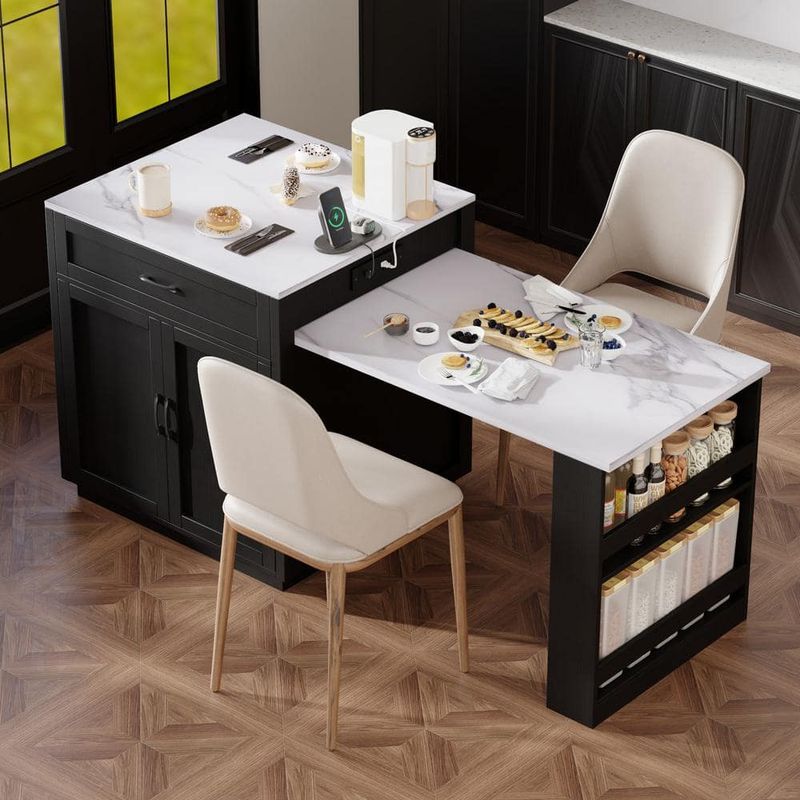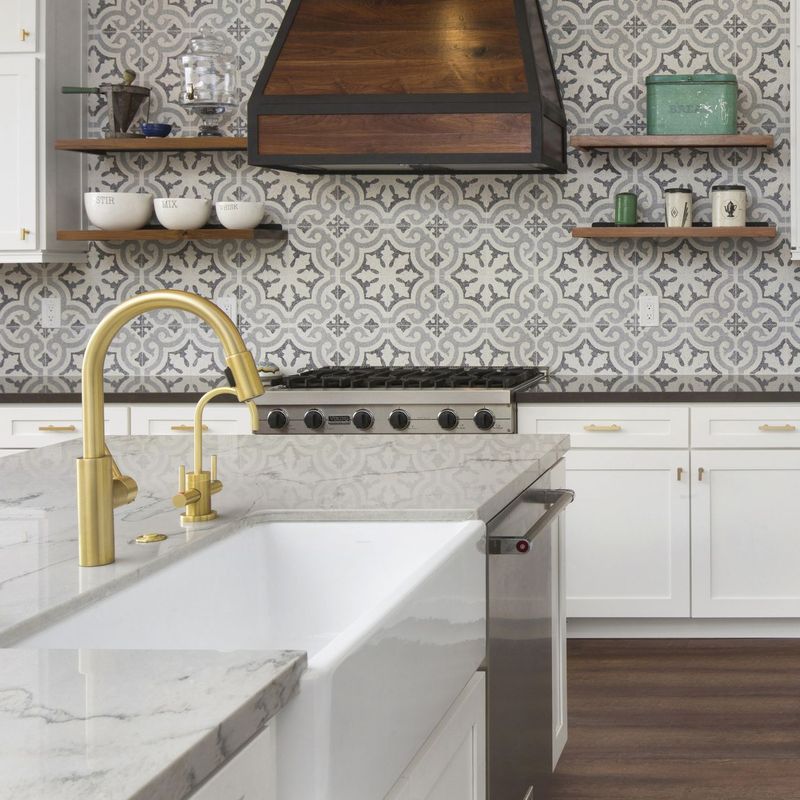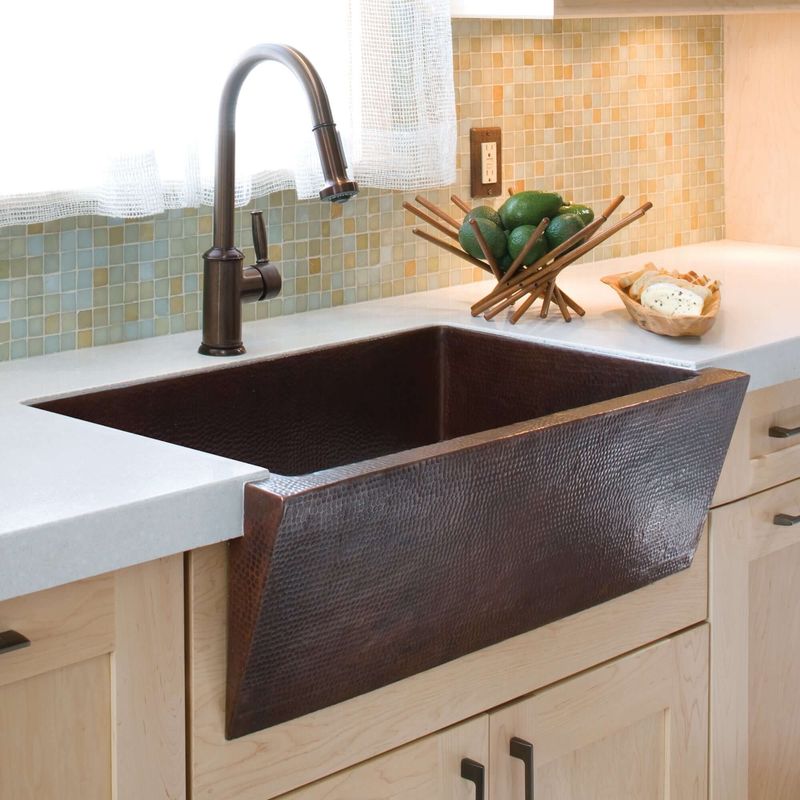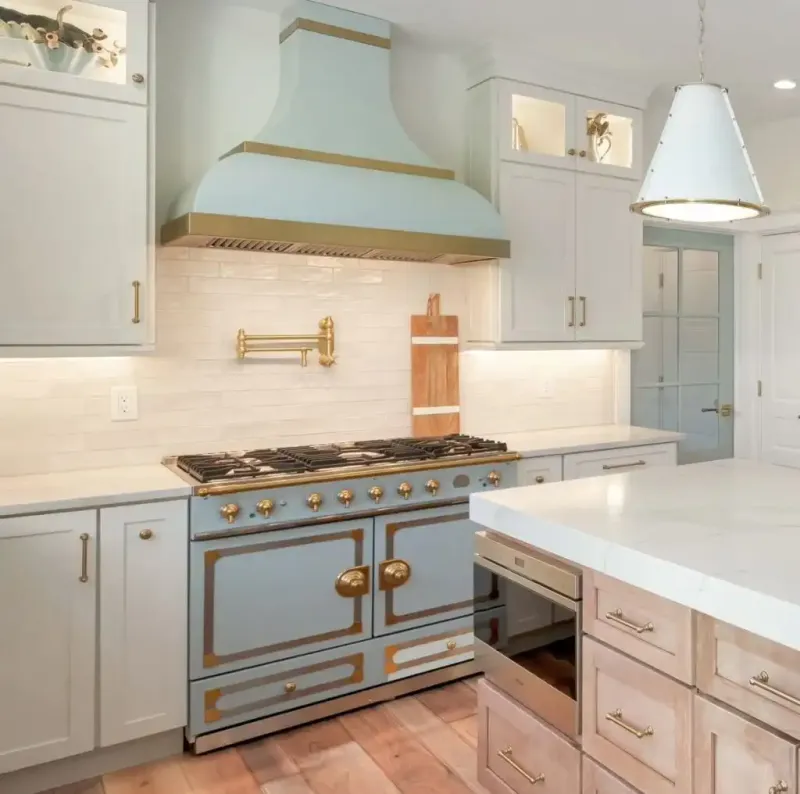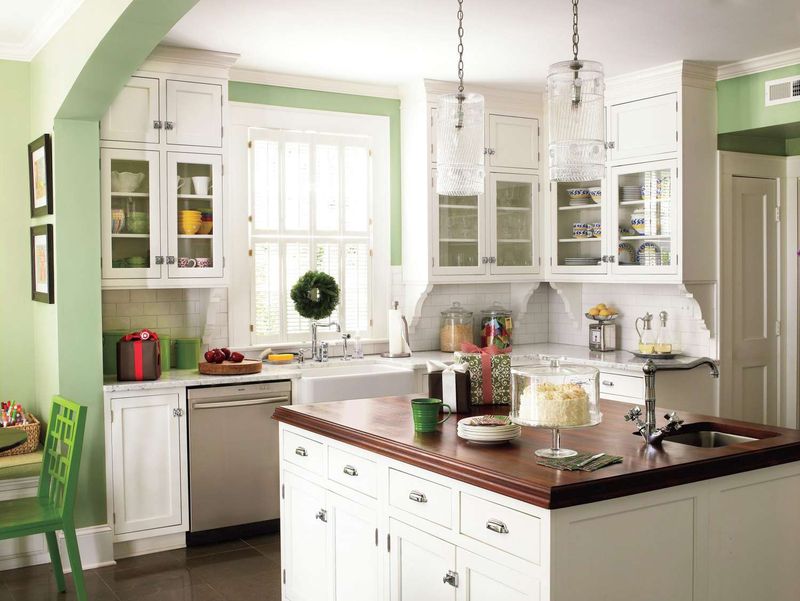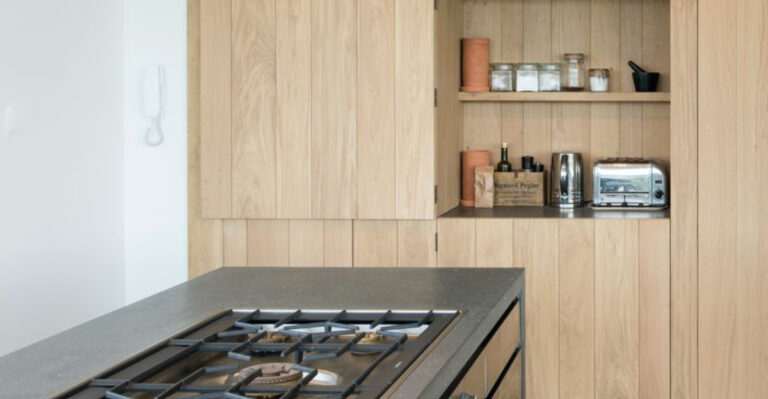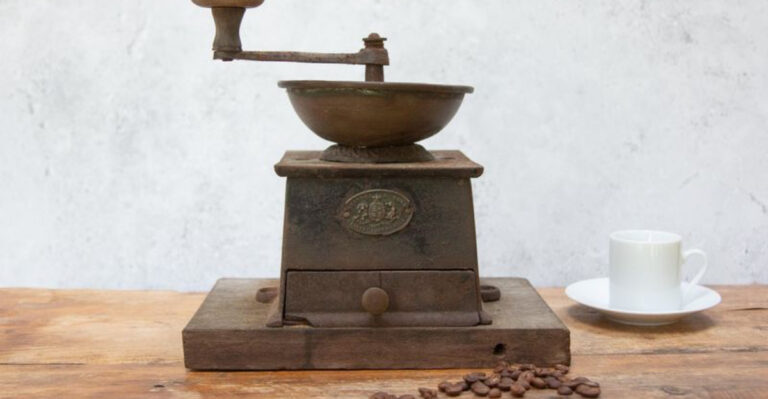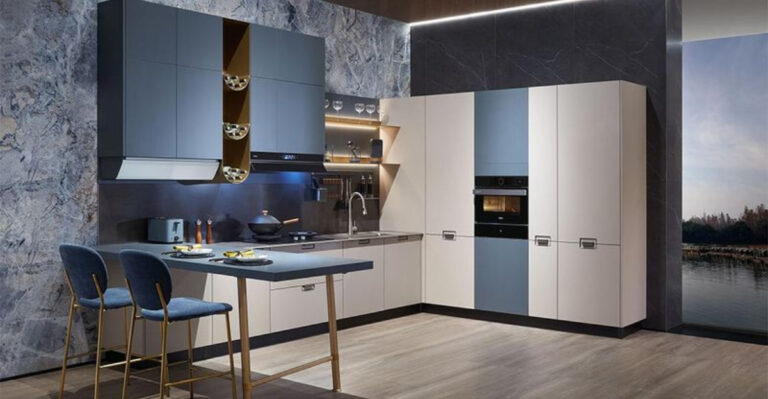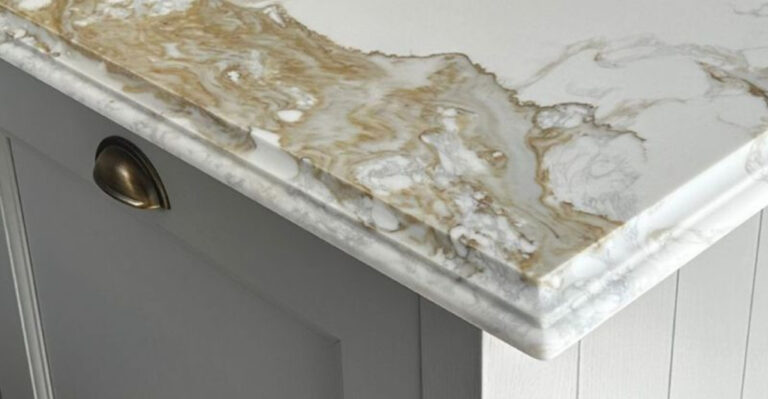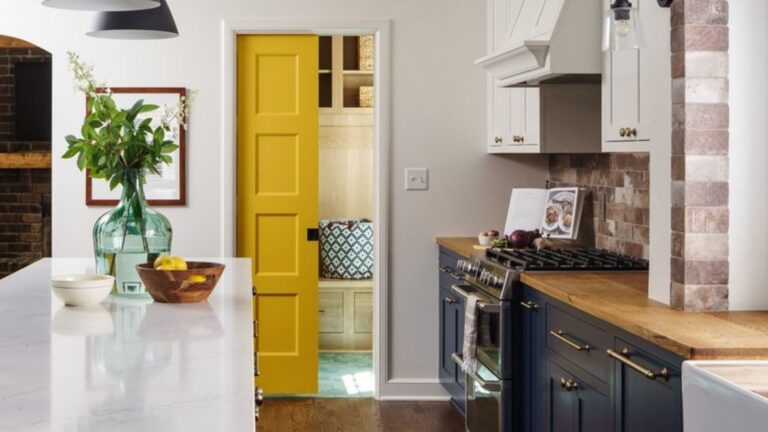9 Kitchen Trends from the 2000s That Designers Are Rethinking (And 9 They Still Adore)
The early 2000s gave us flip phones, frosted tips – and some very bold kitchen design choices. While a few of those trends were ahead of their time, others are now raising eyebrows among today’s designers.
From over-the-top finishes to layout quirks we all thought were genius, the era had its hits and definite misses.
But here’s the thing: not everything from the Y2K kitchen playbook deserves to be tossed. In this guide, I’m breaking down 9 kitchen trends from the 2000s that designers are ready to retire – and 9 they still stand by with pride.
1. Granite Countertops
If stones could speak, these counters would tell tales of culinary adventures from the 2000s. However, in today’s design landscape, they are being reconsidered for more sustainable and less costly options.
Quartz and recycled glass are entering the spotlight, bringing modern flair and environmental benefits. Designers are embracing materials that combine beauty with functionality and sustainability. Granite still whispers elegance but shares its throne.
2. Cherry Wood Cabinets
They once brought warmth and richness to kitchens. If nostalgia had a scent, it might just smell like them! Yes, I’m talking about cherry wood cabinets. In the 2000s, these cabinets were synonymous with elegance, but designers now consider lighter woods like oak and maple.
Such choices reflect a shift toward airy, open spaces. Cherry wood’s deep tones are giving way to more subtle hues, enhancing modern minimalism. Though the rich patina of cherry remains beloved, the trend is moving towards fresher, lighter aesthetics.
3. Stainless Steel Appliances
Picture kitchens gleaming like a knight’s armor, reflecting culinary prowess. While stainless steel appliances remain pretty popular, the allure of matte finishes and colorful options is gaining ground.
People are opting for personalized statements rather than uniformity. Stainless steel’s sleekness is undeniable, but designers now explore textures and colors that add personality.
The trend is shifting toward creating spaces that reflect individuality, where function meets artistic expression. Stainless steel hasn’t lost its charm completely, but it’s surely sharing the stage with creative alternatives.
4. Tuscan-Style Decor
Just imagine stepping into a Tuscan villa each time you enter your kitchen. Tuscan-style decor reigned supreme, evoking sun-drenched hills and rustic charm. But today’s designers are dialing back the Mediterranean influence in favor of cleaner lines and contemporary elegance.
The ornate beauty of Tuscan style is being replaced by minimalist sophistication. This doesn’t erase its appeal; it merely transforms it. Rustic elegance is giving way to sleek simplicity, where less truly is more.
5. Over-the-Range Microwaves
The pinnacle of space-saving innovation was the over-the-range microwave. Like futuristic devices, they hovered over stoves, promising effectiveness.
Designers today are reconsidering this arrangement and looking at alternatives that enable more imaginative layouts. Built-in and countertop variants improve usage and provide versatility. Although it’s still useful, over-the-range is no longer the standard option.
6. Open Shelving
Having open shelving allowed you to display your best dishes, which was a revelation. It provided snippets of culinary gems and was the 2000s equivalent of kitchen transparency.
However, the urge for closed cabinets grows as dust does. Open shelving is being rethought by designers who are trying to strike a balance between style and functionality. Even though it’s still a popular for showing off design, cabinetry that provides concealed storage is being used alongside it.
By combining practical concealment with open elegance, the movement strives for harmony.
7. Brushed Nickel Faucets
Shining elegantly, brushed nickel faucets were the kitchen’s treasure. They added a touch of elegance by decorating sinks like exquisite decorations.
Although still in demand, designers are looking into substitutes like brass or black matte. These selections show a penchant for striking contrasts or cozy accents.
The classic attraction of brushed nickel is still present, but several textures and finishes are complementing it. Classic meets modern in this trend, which combines tradition and modernism.
8. Pot Racks
Cooking symphonies can be heard in a kitchen where pots hang like musical instruments. Pot racks were useful focal points that combined fashion and functionality.
Designers are now, however, reevaluating their bulkiness in favor of more efficient storage. Smart cabinetry and concealed storage options are taking the role of pot racks.
Decluttered elegance is in, where practicality doesn’t come at the expense of beauty.
9. Track Lighting
Kitchens were futuristically lighted by track lighting, which resembled spotlights on a stage. It created dynamic atmospheres by precisely highlighting certain places.
However, ambient and pendant lighting are used in today’s design to complement track lighting. Layers of lighting are being experimented with by designers to improve usefulness and atmosphere. Versatility is becoming more popular, with lighting that can be adjusted to suit various situations and requirements.
1. Subway Tile Backsplashes
Subway tiles have been a staple in kitchen design since the early 2000s. Their clean lines and versatile nature make them a favorite among designers, offering both functionality and a blank canvas for creativity.
With a variety of colors and finishes available, subway tiles can suit any kitchen style, from contemporary to rustic. The beauty of subway tiles lies in their simplicity; they allow other features, like cabinetry or appliances, to shine.
Whether arranged in a classic running bond pattern or a playful herringbone, subway tiles offer endless possibilities for personalization. Their timeless appeal ensures they will remain a cherished element in kitchens for years to come.
2. Chalkboard Walls
Remember when writing on walls was frowned upon? Not anymore! Chalkboard walls became a kitchen staple in the 2000s, offering functional and creative expression. You could jot down grocery lists, display dinner menus, or let kids unleash their artistic flair.
This trend added a personal touch, turning walls into interactive canvases. The charm of chalkboard walls lies in their versatility and ease of customization. Even today, they remain a beloved feature for those who crave creativity and spontaneity in their kitchen.
3. Retro Pastel Appliances
Nostalgia never goes out of style, and retro pastel appliances brought a touch of whimsy to 2000s kitchens. With colors like mint green, baby blue, and soft pink, these appliances became focal points.
Their vintage charm and soft tones offered a soothing contrast to the sleek, modern designs of the era. Today, retro pastels remain a favorite, blending the charm of yesteryears with the functionality of contemporary technology.
4. Eco-Friendly Materials
Sustainability slowly started taking center stage in the 2000s with the introduction of eco-friendly kitchen materials. Bamboo countertops, recycled glass accents, and cork flooring gained popularity.
These materials not only reduced environmental impact but also added unique textures and visual appeal. As the demand for sustainable design grows, these eco-friendly options continue to be embraced by designers and homeowners focused on green living.
5. Convertible Furniture
Space-saving solutions became essential as urban living boomed in the 2000s. Convertible furniture, such as islands that transformed into dining tables, offered flexibility.
These innovative designs catered to smaller spaces without sacrificing style or functionality. They continue to be popular in modern homes, where adaptability and efficiency are key to maximizing space.
6. Bold Tile Patterns
Why settle for boring floors when bold tile patterns can make a statement? In the 2000s, kitchens embraced dramatic tiles with geometric or intricate designs, transforming floors into focal points.
These patterns offered a playful yet sophisticated touch, adding character and flair to any kitchen. The trend for bold tiles continues today, as they provide a creative way to express individual style in home decor.
7. Farmhouse Sinks
The timeless appeal of farmhouse sinks captivated the 2000s, offering both practicality and charm. With their deep basins and apron fronts, they became a favorite among those seeking rustic elegance.
These sinks blend seamlessly with various styles, from country to contemporary, making them a versatile choice. Their enduring popularity speaks to their functionality and aesthetic appeal, remaining a staple in kitchen design.
8. Statement Range Hoods
Range hoods became more than just functional pieces in the 2000s; they became statement pieces. Designers crafted them from materials like copper and brass, giving them decorative flair.
These eye-catching range hoods added elegance and grandeur to kitchens, often becoming the centerpiece of the space. Their bold designs continue to inspire, offering both style and substance in modern kitchens.
9. Glass Front Cabinets
Transparency was in vogue as glass front cabinets gained traction in the 2000s. They provided an airy, open feel while allowing homeowners to showcase beautiful crockery.
These cabinets added elegance and sophistication, making the kitchen feel more inviting. They remain a popular choice for those who appreciate organization and style, offering a blend of practicality and beauty.

